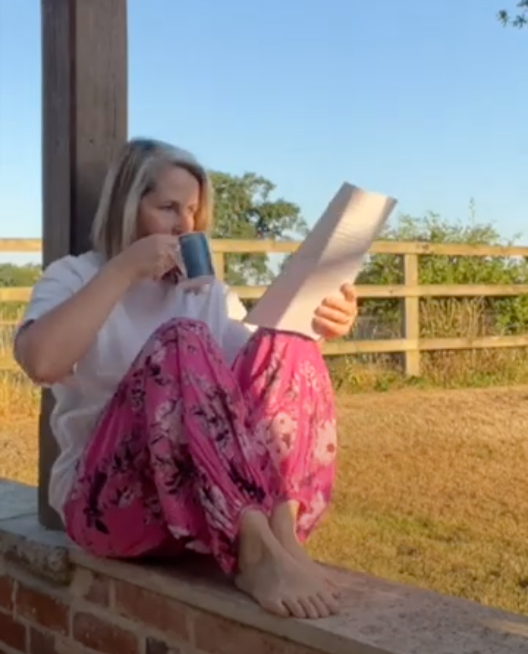Book deals and deadlines - How signing a six-book deal has changed the way I write forever.
- alicegmay
- Jun 1
- 4 min read

I’ve always been a bit of a pantser. For those that don’t know, pantsers are writers who basically tell the first draft of their story by the seat of their pants. They have an idea and dive straight in to writing rather than waste time plotting out the details.
Hence the oft asked question: are you a plotter or a pantser? Which implies that you are either one or the other.
In reality, most writers use a mixture of both approaches. I’ve always plotted a bit, but I get impatient and excited about getting the story down on paper, so rarely wait to plot the whole book out. Instead, I tend to do what I call a discovery draft, which is me basically telling myself the story and getting to know my characters along the way.
I then take a break of several weeks before I re-read the manuscript which allows me to see, firstly, what a mess it is and, secondly, what needs to be done to improve not only the plot, but also each character’s story arc. The other thing it enables me to see is what predominant theme is (or themes are) mixed into the tangled spaghetti of words I have produced. These themes can then be teased out and enhanced in subsequent drafts. This stage involves sticky notes (crazy numbers of sticky notes - as you can see) and vats of strong coffee.

Then, I throw that discovery draft out of the window (metaphorically speaking, because I need those sticky notes) and I write the whole thing again from the very beginning, only better. What follows is two or three more drafts before I have something I am happy to show anyone else (even my husband).
This is a perfectly legitimate way to write. The only problem with it is time. This process produces a book in a year, or, more likely, a book in eighteen months to two years.
BUT now that I have signed a six-book contract, which requires a completed manuscript to be submitted every six months, I need to look at working in a more efficient way.
I’ll be completely honest, writing book two in the series was a bit of a nightmare. Time ticked steadily past. My old way of working wasn’t producing the goods fast enough. My stress levels were rising. Strong coffee wasn't achieving the same results and there were not nearly enough sticky notes (and even if there were, I didn't know what to put on them). Panic made thinking with any degree of clarity almost impossible. Halfway through the six months, I gave up, had a mini (actually, it wasn’t mini at all) tantrum, told myself I was useless and almost gave up.
My lovely husband stopped me throwing my laptop out of the window (that window gets a lot of things thrown out of it) and dragged me off for a long walk. And I mean a really long walk. Miles and miles. It was the first fresh air and exercise I’d had in weeks.
He let me rant. Then he bought me ice cream and asked me to tell him the storyline for this new book.
Putting my ideas into spoken words was painfully slow to start with, resulting in a long ramble of relatively incoherent nonsense punctuated by embarrassed pauses. He kept listening and occasionally asked a question. He even managed to sound genuinely interested. He asked things like, why was a certain character doing something? Or what caused someone to be somewhere and what were the consequences of that? Slowly, he teased the main threads of the story from the chaos in my head.
Talking it all through – in spoke words rather than written words, enabled me to find a path through my confusion.

At about the same time, a writer friend the awesome psychological thriller writer, Alex Stone, (author of The Quiet Sister and the genius behind www.authorevents.co.uk a website offering amazing support to writers) gave me some good advice for sorting through plot snarls just like the one I was struggling with. She suggested writing a detailed synopsis. Not the sort of synopsis one might write to submit to an agent or publisher, because they usually want very tight, specific word counts and are a whole other skill in themselves. Instead, she said to simply write a detailed breakdown of the story in as many words as were needed in order to explain the basic shape of it from start to finish.
So, having talked everything through with my husband, I did as she suggested. I outlined the skeleton of the story, bullet point style. In effect, what I was doing was plotting the whole thing retrospectively. Then, all I had to do was re-write it. The only problem was, so much time had passed that I had to literally write day and night to meet my deadline.
I did it, by the skin of my teeth.
I submitted the manuscript for book 2 in The Resistance Girls to my wonderful editor a few days shy of Book 1 being published.
And fortunately, she likes it. Yay!
Onwards with book 3, and - guess what? - I plotted this one within an inch of its life before I started actually writing. It’s great knowing exactly where I am going.
Why on earth did I wait this long to get to grips with plotting?
If you’re writing, I wish you the very best of luck with it, whatever method you use.
Love
Alice
PS Snag your copy of the Resistance Girls here : https://bit.ly/4jI7tAQ



Comments